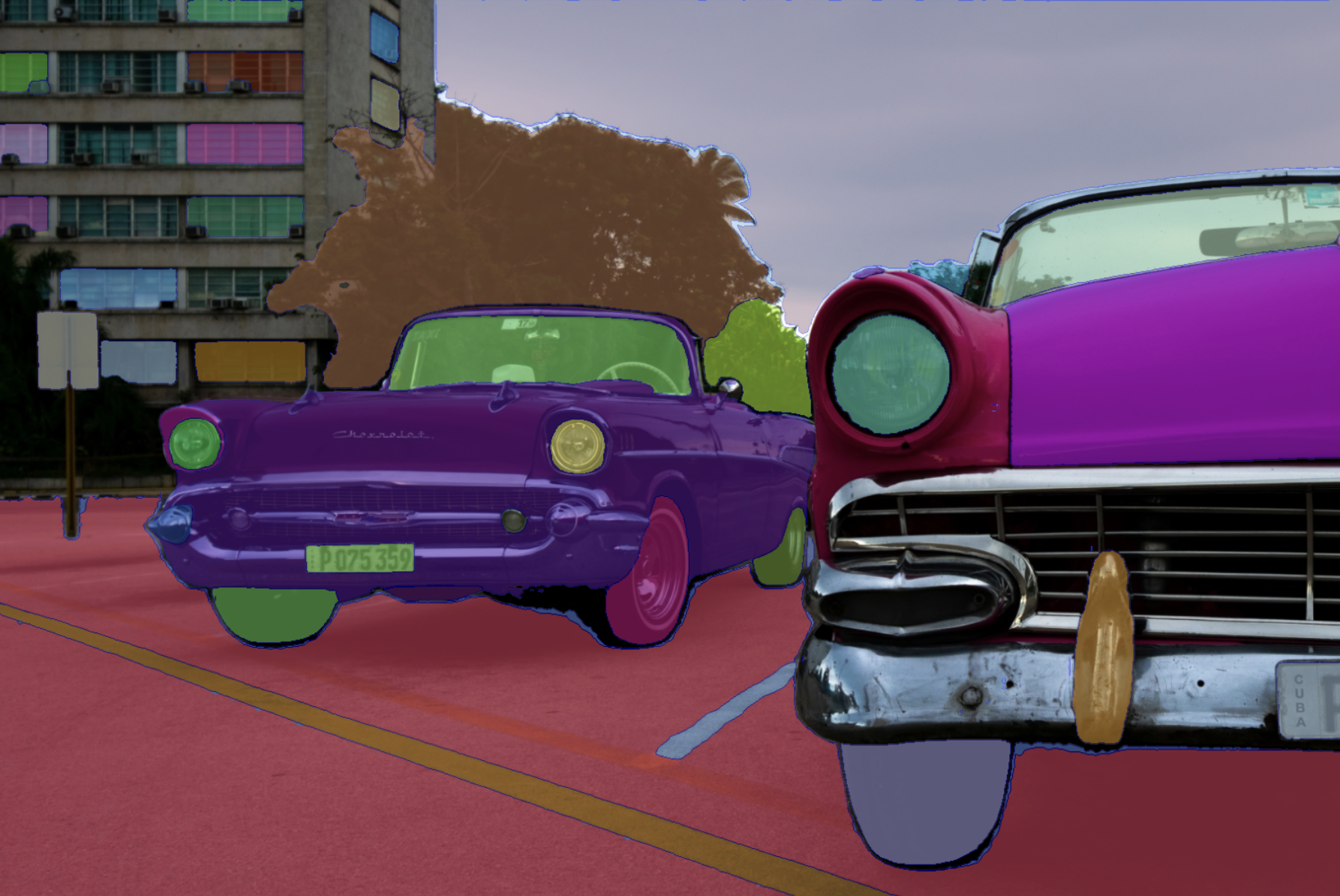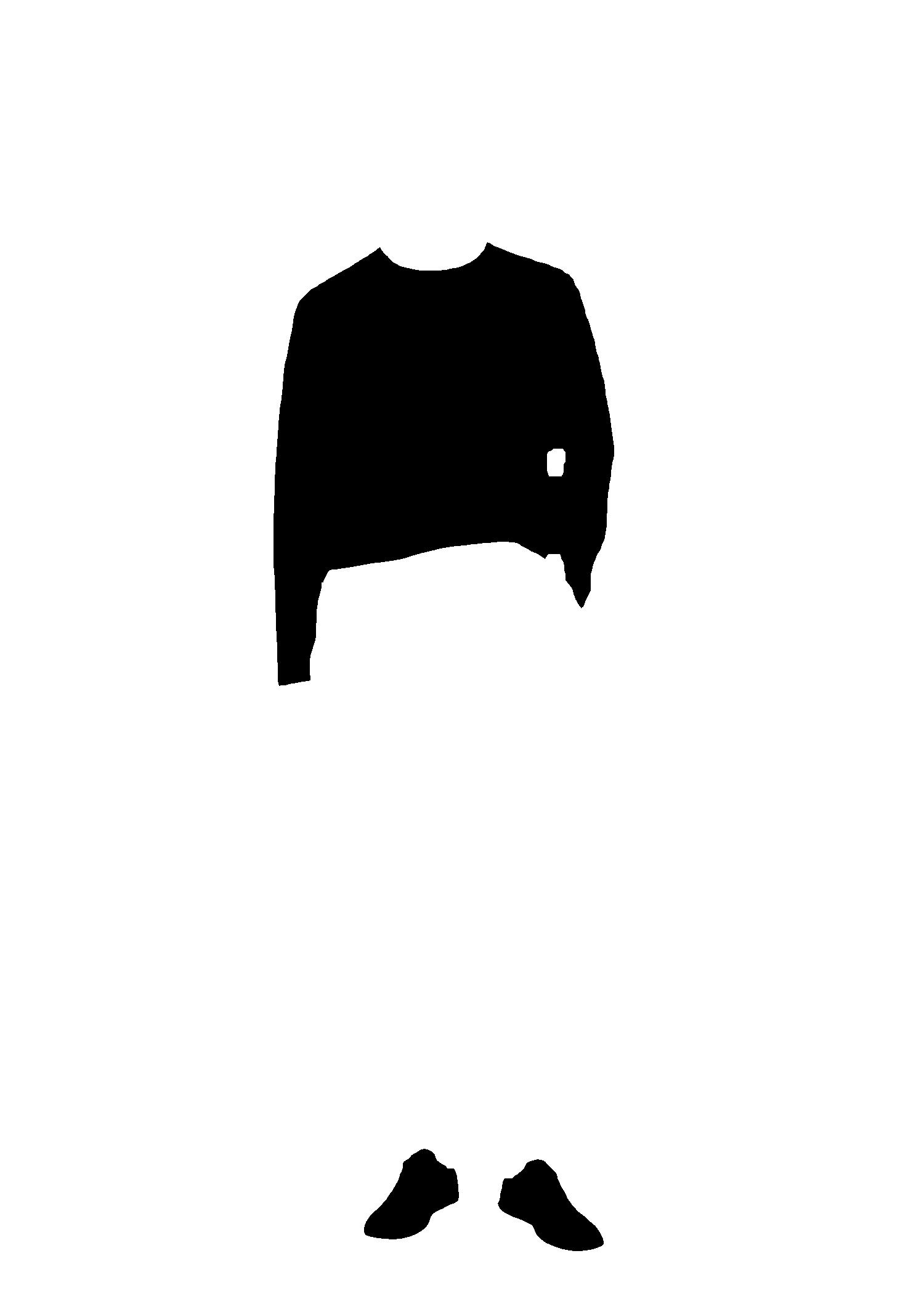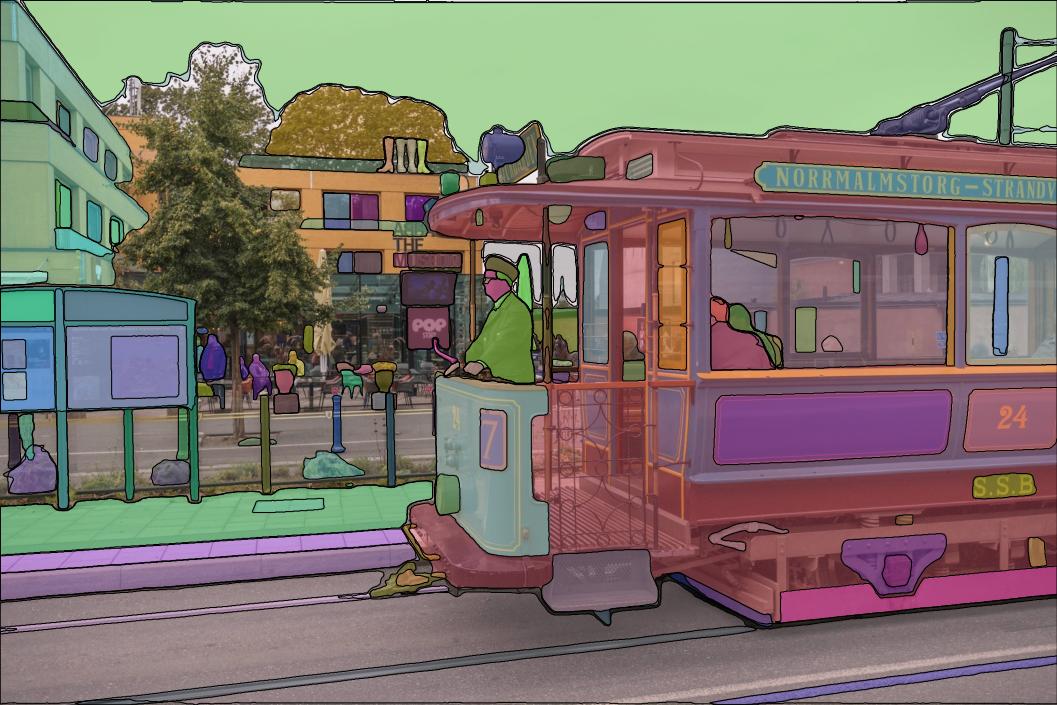ram-grounded-sam
Maintainer: idea-research

1.3K
🤔
| Property | Value |
|---|---|
| Run this model | Run on Replicate |
| API spec | View on Replicate |
| Github link | View on Github |
| Paper link | View on Arxiv |
Create account to get full access
Model overview
ram-grounded-sam is an AI model that combines the strengths of the Recognize Anything Model (RAM) and the Grounded-Segment-Anything model. It exhibits exceptional recognition abilities, capable of detecting and segmenting a wide range of common objects in images using free-form text prompts. This model builds upon the powerful Segment Anything Model (SAM) and the Grounding DINO detector to provide a robust and versatile tool for visual understanding tasks.
Model inputs and outputs
The ram-grounded-sam model takes an input image and a text prompt as inputs, and generates segmentation masks for the objects and regions described in the prompt. The text prompt can be a free-form description of the objects or scenes of interest, allowing for flexible and expressive control over the model's behavior.
Inputs
- Image: The input image for which the model will generate segmentation masks.
- Text Prompt: A free-form text description of the objects or scenes of interest in the input image.
Outputs
- Segmentation Masks: The model outputs a set of segmentation masks, each corresponding to an object or region described in the text prompt. These masks precisely outline the boundaries of the detected entities.
- Bounding Boxes: The model also provides bounding boxes around the detected objects, which can be useful for tasks like object detection or localization.
- Confidence Scores: The model outputs confidence scores for each detected object, indicating the model's certainty about the presence and precise segmentation of the corresponding entity.
Capabilities
The ram-grounded-sam model is capable of detecting and segmenting a wide variety of common objects and scenes in images, ranging from everyday household items to complex natural landscapes. It can handle prompts that describe multiple objects or scenes, and can accurately segment all the relevant entities. The model's strong zero-shot performance allows it to generalize to new domains and tasks beyond its training data.
What can I use it for?
ram-grounded-sam can be a powerful tool for a variety of computer vision and image understanding tasks. Some potential applications include:
-
Automated Image Annotation: The model can be used to automatically generate detailed labels and masks for the contents of images, which can be valuable for building and annotating large-scale image datasets.
-
Interactive Image Editing: By providing precise segmentation of objects and regions, the model can enable intuitive and fine-grained image editing capabilities, where users can select and manipulate specific elements of an image.
-
Visual Question Answering: The model's ability to understand and segment image contents based on text prompts can be leveraged to build more advanced visual question answering systems.
-
Robotic Perception: The model's real-time segmentation capabilities could be integrated into robotic systems to enable more fine-grained visual understanding and interaction with the environment.
Things to try
One interesting aspect of the ram-grounded-sam model is its ability to handle complex and open-ended text prompts. Try providing prompts that describe multiple objects or scenes, or use more abstract or descriptive language to see how the model responds. You can also experiment with providing the model with challenging or unusual images to test its generalization capabilities.
Another interesting direction to explore is combining ram-grounded-sam with other AI models, such as language models or generative models, to enable more advanced image understanding and manipulation tasks. For example, you could use the model's segmentation outputs to guide the generation of new image content or the editing of existing images.
This summary was produced with help from an AI and may contain inaccuracies - check out the links to read the original source documents!
Related Models

sam-2

5
SAM 2: Segment Anything in Images and Videos is a foundation model for solving promptable visual segmentation in images and videos. It extends the original Segment Anything Model (SAM) by Meta to support video processing. The model design is a simple transformer architecture with streaming memory for real-time video processing. SAM 2 is trained on the Segment Anything Video (SA-V) dataset, the largest video segmentation dataset to date, providing strong performance across a wide range of tasks and visual domains. Model inputs and outputs The SAM 2 model takes an image or video as input and allows users to provide prompts (such as points, boxes, or text) to segment relevant objects. The outputs include a combined mask covering all segmented objects as well as individual masks for each object. Inputs Image**: The input image to perform segmentation on. Use M2M**: A boolean flag to use the model-in-the-loop data engine, which improves the model and data via user interaction. Points Per Side**: The number of points per side for mask generation. Pred Iou Thresh**: The predicted IoU threshold for mask prediction. Stability Score Thresh**: The stability score threshold for mask prediction. Outputs Combined Mask**: A single combined mask covering all segmented objects. Individual Masks**: An array of individual masks for each segmented object. Capabilities SAM 2 can be used for a variety of visual segmentation tasks, including interactive segmentation, automatic mask generation, and video segmentation and tracking. It builds upon the strong performance of the original SAM model, while adding the capability to process video data. What can I use it for? SAM 2 can be used for a wide range of applications that require precise object segmentation, such as content creation, video editing, autonomous driving, and robotic manipulation. The video processing capabilities make it particularly useful for applications that involve dynamic scenes, such as surveillance, sports analysis, and live event coverage. Things to try With SAM 2, you can experiment with different types of prompts (points, boxes, or text) to see how they affect the segmentation results. You can also try the automatic mask generation feature to quickly isolate objects of interest without manual input. Additionally, the video processing capabilities allow you to track objects across multiple frames, which could be useful for applications like motion analysis or object tracking.
Updated Invalid Date

grounded_sam

606
grounded_sam is an AI model that combines the strengths of Grounding DINO and Segment Anything to provide a powerful pipeline for solving complex masking problems. Grounding DINO is a strong zero-shot object detector that can generate high-quality bounding boxes and labels from free-form text, while Segment Anything is an advanced segmentation model that can generate masks for all objects in an image. This project adds the ability to prompt multiple masks and combine them, as well as to subtract negative masks for fine-grained control. Model inputs and outputs grounded_sam takes an image, a positive mask prompt, a negative mask prompt, and an adjustment factor as inputs. It then generates a set of masks that match the provided prompts. The positive prompt is used to identify the objects or regions of interest, while the negative prompt is used to exclude certain areas from the mask. The adjustment factor can be used to dilate or erode the masks. Inputs Image**: The input image to be masked. Mask Prompt**: The text prompt used to identify the objects or regions of interest. Negative Mask Prompt**: The text prompt used to exclude certain areas from the mask. Adjustment Factor**: An integer value that can be used to dilate (+) or erode (-) the generated masks. Outputs Masks**: An array of image URIs representing the generated masks. Capabilities grounded_sam is a powerful tool for programmed inpainting and selective masking. It can be used to precisely target and mask specific objects or regions in an image based on text prompts, while also excluding unwanted areas. This makes it useful for tasks like image editing, content creation, and data annotation. What can I use it for? grounded_sam can be used for a variety of applications, such as: Image Editing**: Precisely mask and modify specific elements in an image, such as removing objects, replacing backgrounds, or adjusting the appearance of specific regions. Content Creation**: Generate custom masks for use in digital art, compositing, or other creative projects. Data Annotation**: Automate the process of annotating images for tasks like object detection, instance segmentation, and more. Things to try One interesting thing to try with grounded_sam is using it to create masks for programmed inpainting. By combining the positive and negative prompts, you can precisely target the areas you want to keep or remove, and then use the adjustment factor to fine-tune the masks as needed. This can be a powerful tool for tasks like object removal, image restoration, or content-aware fill.
Updated Invalid Date

segment-anything-automatic

3
The segment-anything-automatic model, created by pablodawson, is a version of the Segment Anything Model (SAM) that can automatically generate segmentation masks for all objects in an image. SAM is a powerful AI model developed by Meta AI Research that can produce high-quality object masks from simple input prompts like points or bounding boxes. Similar models include segment-anything-everything and the official segment-anything model. Model inputs and outputs The segment-anything-automatic model takes an image as its input and automatically generates segmentation masks for all objects in the image. The model supports various input parameters to control the mask generation process, such as the resize width, the number of crop layers, the non-maximum suppression thresholds, and more. Inputs image**: The input image to generate segmentation masks for. resize_width**: The width to resize the image to before running inference (default is 1024). crop_n_layers**: The number of layers to run mask prediction on crops of the image (default is 0). box_nms_thresh**: The box IoU cutoff used by non-maximal suppression to filter duplicate masks (default is 0.7). crop_nms_thresh**: The box IoU cutoff used by non-maximal suppression to filter duplicate masks between different crops (default is 0.7). points_per_side**: The number of points to be sampled along one side of the image (default is 32). pred_iou_thresh**: A filtering threshold between 0 and 1 using the model's predicted mask quality (default is 0.88). crop_overlap_ratio**: The degree to which crops overlap (default is 0.3413333333333333). min_mask_region_area**: The minimum area of a mask region to keep after postprocessing (default is 0). stability_score_offset**: The amount to shift the cutoff when calculating the stability score (default is 1). stability_score_thresh**: A filtering threshold between 0 and 1 using the stability of the mask under changes to the cutoff (default is 0.95). crop_n_points_downscale_factor**: The factor to scale down the number of points-per-side sampled in each layer (default is 1). Outputs Output**: A URI to the generated segmentation masks for the input image. Capabilities The segment-anything-automatic model can automatically generate high-quality segmentation masks for all objects in an image, without requiring any manual input prompts. This makes it a powerful tool for tasks like image analysis, object detection, and image editing. The model's strong zero-shot performance allows it to work well on a variety of image types and scenes. What can I use it for? The segment-anything-automatic model can be used for a wide range of applications, including: Image analysis**: Automatically detect and segment all objects in an image for further analysis. Object detection**: Use the generated masks to identify and locate specific objects within an image. Image editing**: Leverage the precise segmentation masks to selectively modify or remove objects in an image. Automation**: Integrate the model into image processing pipelines to automate repetitive segmentation tasks. Things to try Some interesting things to try with the segment-anything-automatic model include: Experiment with the various input parameters to see how they affect the generated masks, and find the optimal settings for your specific use case. Combine the segmentation masks with other computer vision techniques, such as object classification or instance segmentation, to build more advanced image processing applications. Explore using the model for creative applications, such as image compositing or digital artwork, where the precise segmentation capabilities can be valuable. Compare the performance of the segment-anything-automatic model to similar models, such as segment-anything-everything or the official segment-anything model, to find the best fit for your needs.
Updated Invalid Date

sdxl-lightning-4step

414.6K
sdxl-lightning-4step is a fast text-to-image model developed by ByteDance that can generate high-quality images in just 4 steps. It is similar to other fast diffusion models like AnimateDiff-Lightning and Instant-ID MultiControlNet, which also aim to speed up the image generation process. Unlike the original Stable Diffusion model, these fast models sacrifice some flexibility and control to achieve faster generation times. Model inputs and outputs The sdxl-lightning-4step model takes in a text prompt and various parameters to control the output image, such as the width, height, number of images, and guidance scale. The model can output up to 4 images at a time, with a recommended image size of 1024x1024 or 1280x1280 pixels. Inputs Prompt**: The text prompt describing the desired image Negative prompt**: A prompt that describes what the model should not generate Width**: The width of the output image Height**: The height of the output image Num outputs**: The number of images to generate (up to 4) Scheduler**: The algorithm used to sample the latent space Guidance scale**: The scale for classifier-free guidance, which controls the trade-off between fidelity to the prompt and sample diversity Num inference steps**: The number of denoising steps, with 4 recommended for best results Seed**: A random seed to control the output image Outputs Image(s)**: One or more images generated based on the input prompt and parameters Capabilities The sdxl-lightning-4step model is capable of generating a wide variety of images based on text prompts, from realistic scenes to imaginative and creative compositions. The model's 4-step generation process allows it to produce high-quality results quickly, making it suitable for applications that require fast image generation. What can I use it for? The sdxl-lightning-4step model could be useful for applications that need to generate images in real-time, such as video game asset generation, interactive storytelling, or augmented reality experiences. Businesses could also use the model to quickly generate product visualization, marketing imagery, or custom artwork based on client prompts. Creatives may find the model helpful for ideation, concept development, or rapid prototyping. Things to try One interesting thing to try with the sdxl-lightning-4step model is to experiment with the guidance scale parameter. By adjusting the guidance scale, you can control the balance between fidelity to the prompt and diversity of the output. Lower guidance scales may result in more unexpected and imaginative images, while higher scales will produce outputs that are closer to the specified prompt.
Updated Invalid Date